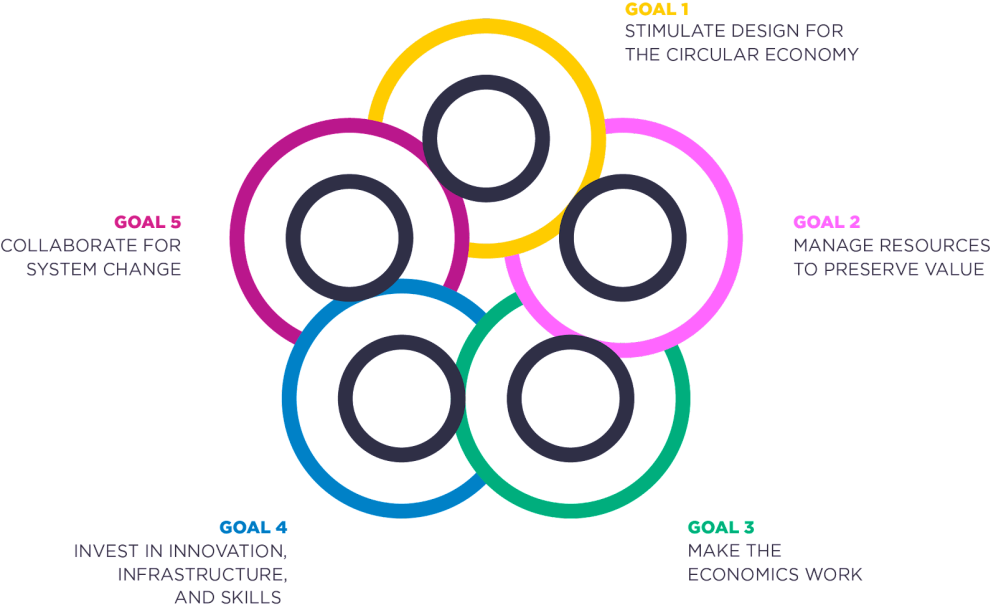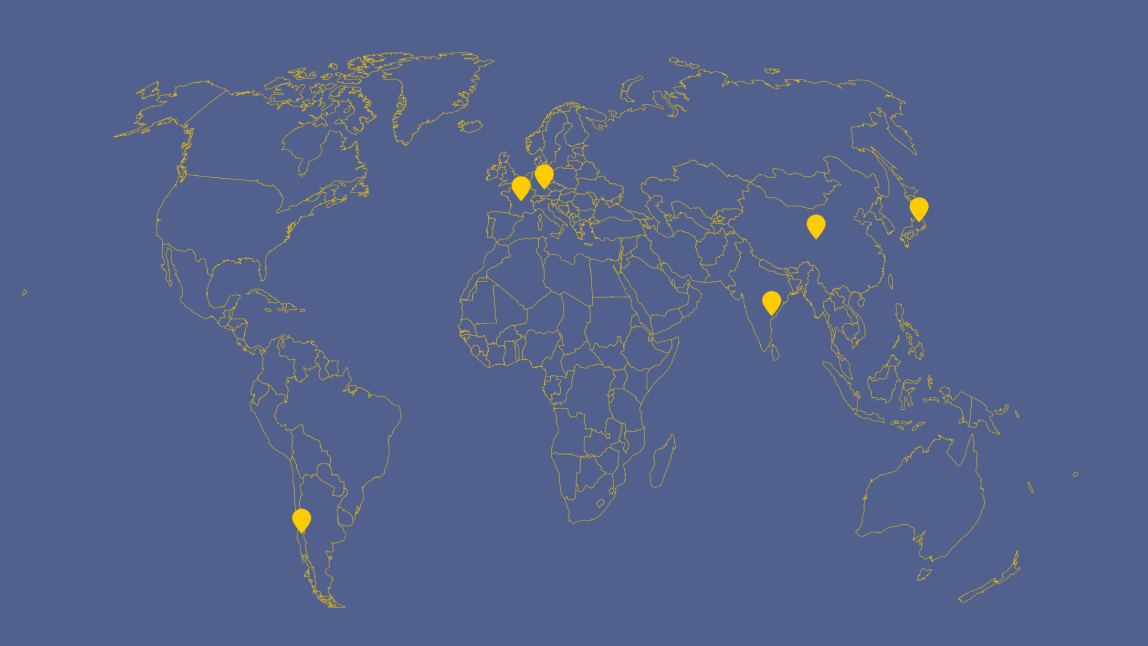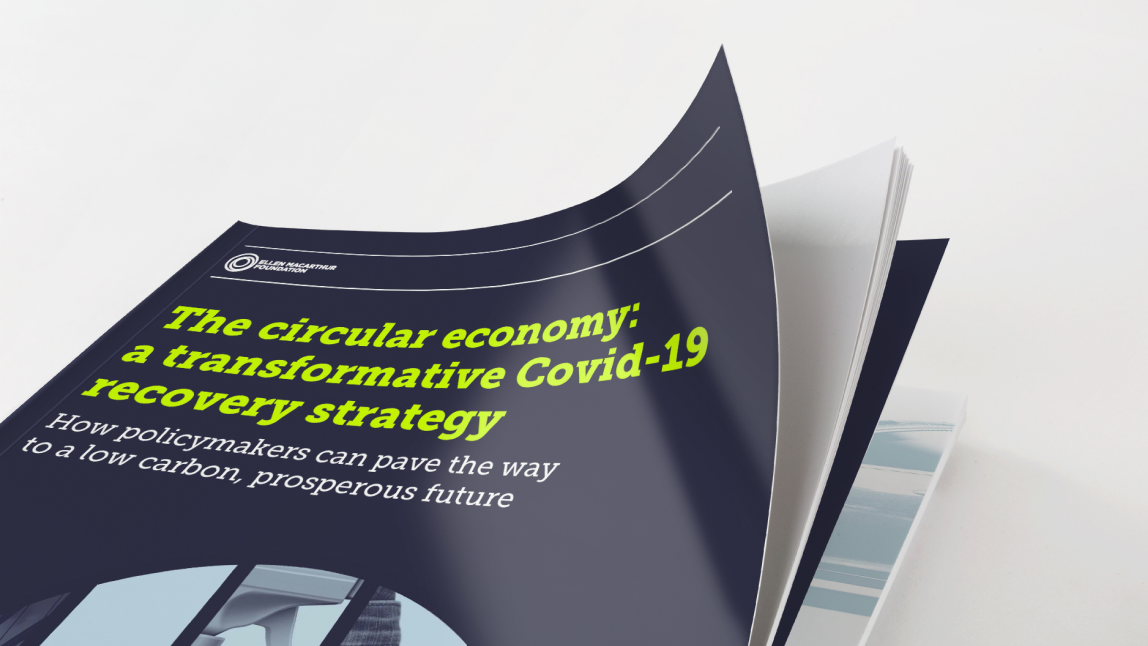The Ellen MacArthur Foundation has set out five universal circular economy policy goals that provide a framework for national governments, cities and businesses to accelerate the transition.
As governments and industries around the globe move towards a circular economycircular economyA systems solution framework that tackles global challenges like climate change, biodiversity loss, waste, and pollution. It is based on three principles, driven by design: eliminate waste and pollution, circulate products and materials (at their highest value), and regenerate nature., it’s key to align ambitions and create a common direction of travel.
The Ellen MacArthur Foundation’s five universal circular economy policy goals aim to ensure the transition fosters innovation and decouples economic growth from the consumption of finite resources. The goals provide a blueprint for co-operation - to make them effective, we need to work together across the private and public sectors.
By recognising that the relevant policies are interconnected, we can avoid creating a patchwork of fragmented solutions, and by aligning nationally and internationally, we can reduce friction across borders and lower costs. Close co-operation also minimises the risk of individual policy measures remaining isolated in a wider, unchanged economic system that’s based on a linear ‘take-make-waste’ approach.
The Universal Circular Economy Policy Goals
In 2021, we published our Universal Circular Economy Policy Goals: five key policy focus areas to develop, deploy and scale circular economy solutions across sectors and around the world.

Stimulate design for the circular economy
Enable all products – from fast-moving consumer goods to long-term assets – to be designed, accessed, and used in ways that eliminate waste and pollution.
Selected policy measures
Stimulating high-quality design for goods and packaging with an emphasis on durability, reusability, design for repairability and remanufacturing, recyclability and compostability.
Sharing of information and tracking through product labels, tags, and digital product material passports.
Encouraging regenerative production through product and formulation design, sourcing practices, as well as agricultural and land-use policies.
Manage resources to preserve value
Promote the development of business models and resource management systems that keep products and materials in the economy at their highest possible value. This goal is enabled by the design principles and approaches laid out in Goal 1.
Selected policy measures
Implementing tax and procurement policies that foster repair, sharing, resale, and remanufacturing to maximise asset use and return on invested energy.
Reviewing and harmonising resource classifications and definitions in waste legislation.
Strengthening resource loops through Extended Producer Responsibility (EPR) policies and Deposit Return Schemes (DRS) to support circular opportunities from reuse to recycling.
Make the economics work
Create economic incentives and set regulatory requirements that enable circular economy solutions to become the norm rather than the exception, thereby unlocking benefits at scale.
Selected policy measures
Aligning taxation and fee incentives, such as EPR, with circular economy outcomes.
Reforming and, where relevant, deploying subsidies.
Incorporating circular economy principles into trade policies.
Invest in innovation, infrastructure and skills
Invest public money, and stimulate private sector investment to develop the skills required to create circular economy opportunities. This will ensure an inclusive transition, supporting innovation, and developing the infrastructure necessary to scale the transition.
Selected policy measures
Providing interdisciplinary research funds.
Supporting blended finance solutions for physical and digital infrastructure, and innovation.
Incorporating the circular economy in school and higher education programmes.
Collaborate for system change
Foster responsive public-private collaboration across value chains to remove barriers, develop new policies, and align existing ones. Work across government departments, nationally and internationally to build policy alignment and durable change. Measure progress towards embedding a circular economy approach across sectors.
Selected policy measures
Promoting the establishment and adoption of multi-stakeholder, cross-value-chain, inclusive and responsive working mechanisms to develop system solutions and to build public-private capacity.
Mainstreaming circular economy principles into national and international policies, and building cross-border policy alignment.
Accelerating progress through measurement and use of data.
The goals in practice:
These policies from around the world exemplify elements of the goals in practice.
To quote this paper, please use the following reference: Ellen MacArthur Foundation, Universal Circular Economy Policy Goals (2021).









